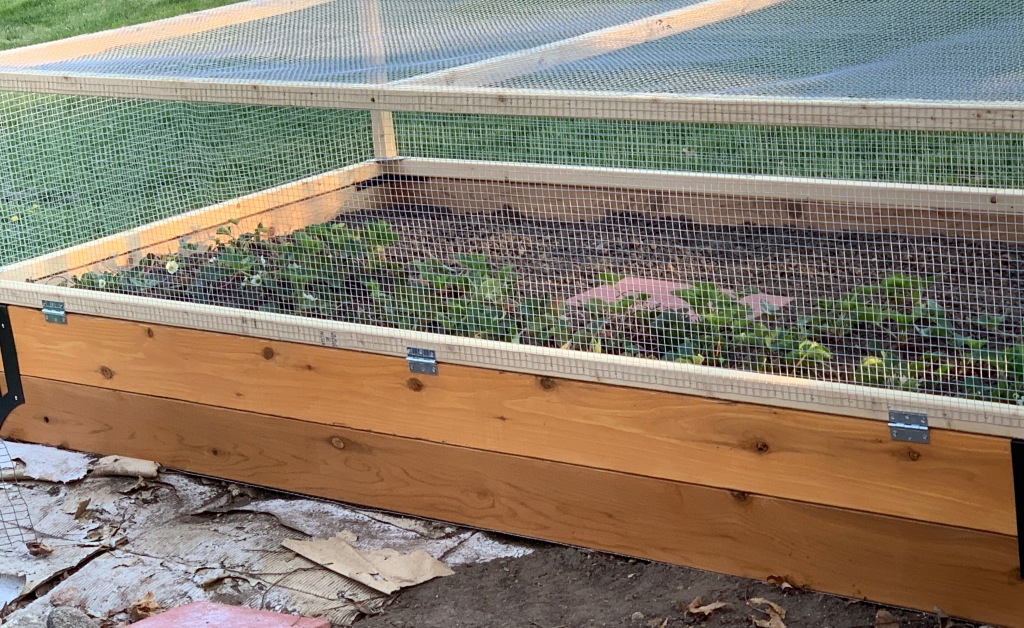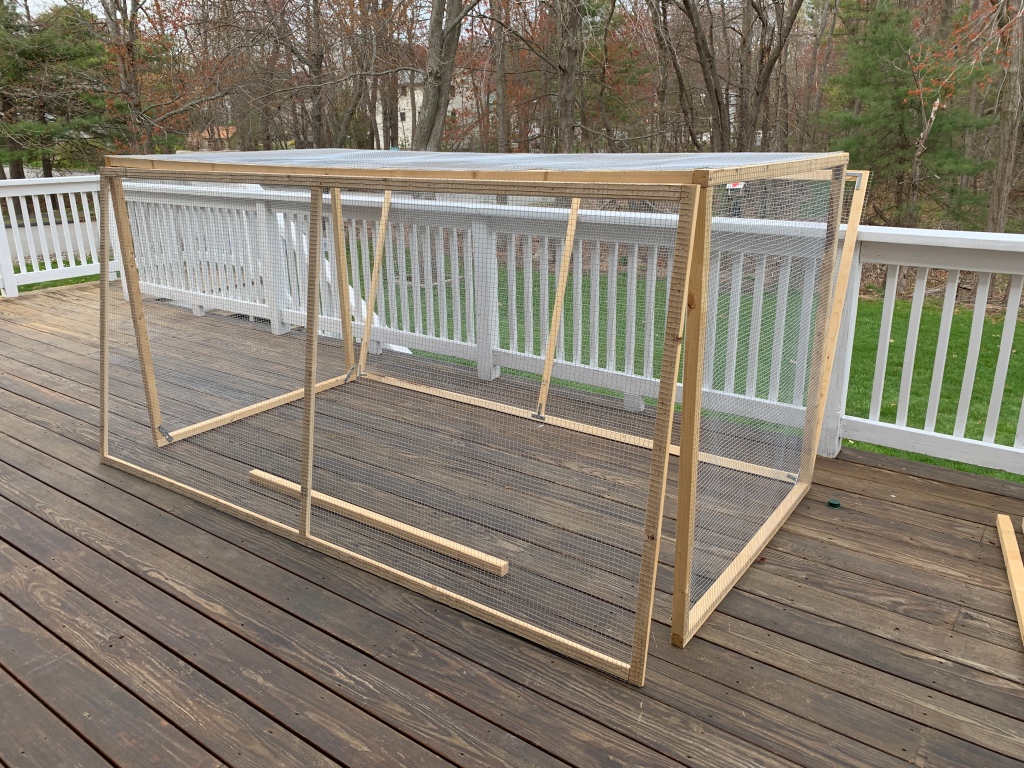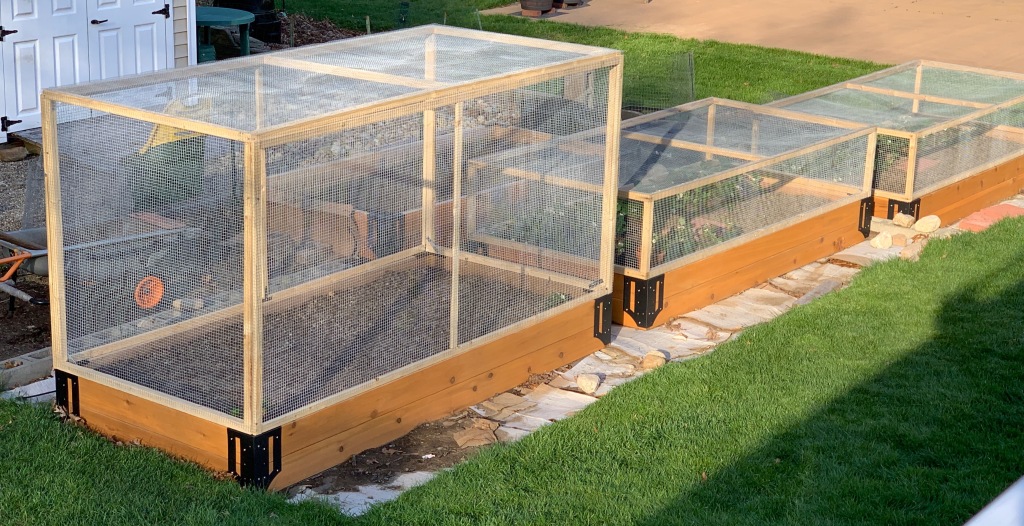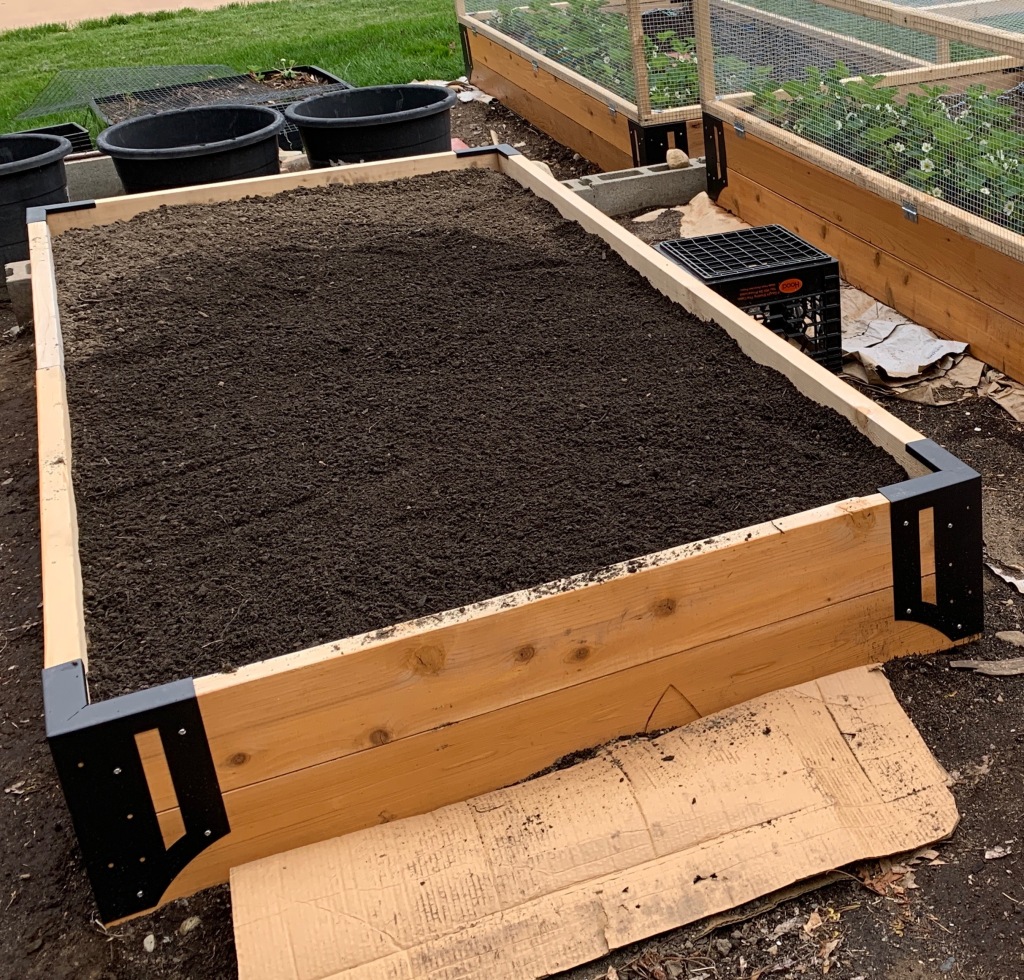It’s finished!
If you haven’t seen the beginning of this project, check out the first three posts: New Beginnings, Getting There, and So Close.

After installing all the cages on the garden beds, I took a trip to The Herb Farmacy in Salisbury, MA. It’s always fun and interesting to browse the selections in their greenhouses. They’re the gardner’s version of a candy store! I chose some tomato, cuke, zucchini, and butternut squash plants. I also picked up a couple of nasturtiums and basil.
The zucchini and cuke plants now share space in one of the tall-caged beds, beside the peas, along with one of the nasturtiums.

In the other tall-caged bed, I put the two tomato plants and the basil. It’s hard to imagine these small seedlings will fill the space I’ve given them. It’s tempting to put too much, too close together. In the past, I’ve done just that and ended up with a garden jungle! This year, I’m trusting the process. 🙂


The butternut squash and the 2nd nasturtium went into one of the low-caged beds in front of the strawberries.
Meanwhile, the spinach, kale, lettuce, beets and carrots are getting bigger, although recently assaulted by a blizzard of helicopter seeds.


Finally, it was time for the finishing touches. I planted marigolds in the cinder blocks outside the beds, then laid landscape paper and spread mulch around and in-between the beds. I splurged on the final embellishments: lovely potted pink geraniums placed on paving squares at a few outside corners.


The end result is just what I envisioned (well, pretty darn close, at least) and I’m looking forward to an easier, more productive gardening season this summer. I’ll leave you with a random list of things I learned during my garden-bed-building adventure:
- It takes hard work to bring a plan to fruition. Sometimes it’s fun. Sometimes it’s just hard.
- When you go to the local home improvement store to find nails similar to the ones you had on hand, but used up, be prepared to encounter a few well-meaning males who want to explain to you that a two-by-four is really only 1 1/2″ thick. (Thank you so much. <eye roll>)
- If you don’t buy all the nice cedar boards that you need in one trip, they may very well be gone next time you go looking for them. (sigh)
- You can’t construct a perfectly square corner with two bowed boards.
- Hardware cloth is not cloth at all.
- Your math-brain may see half-inch hardware cloth as a beautifully squared grid, like graph paper, but it’s not.
- If the website doesn’t say SCREENED loam, it’s not.
- Close is good enough sometimes.
- There’s no shame in asking for help.
- It takes hard work to bring a plan to fruition… but it’s so worth it in the end. 🙂





























